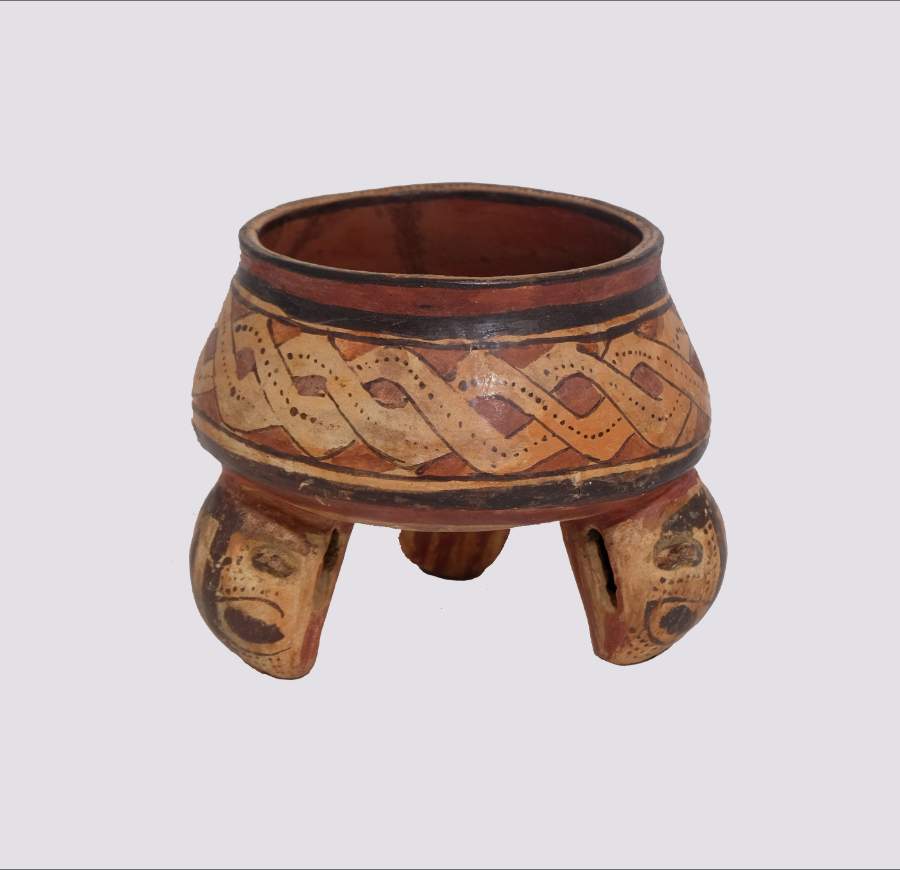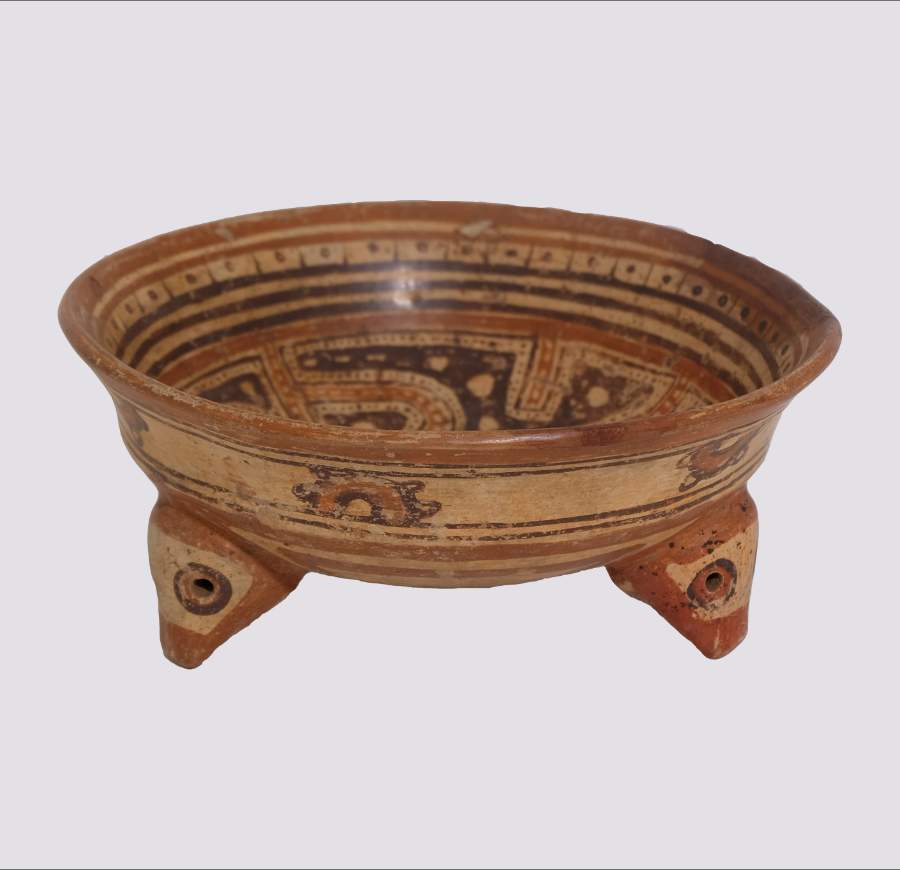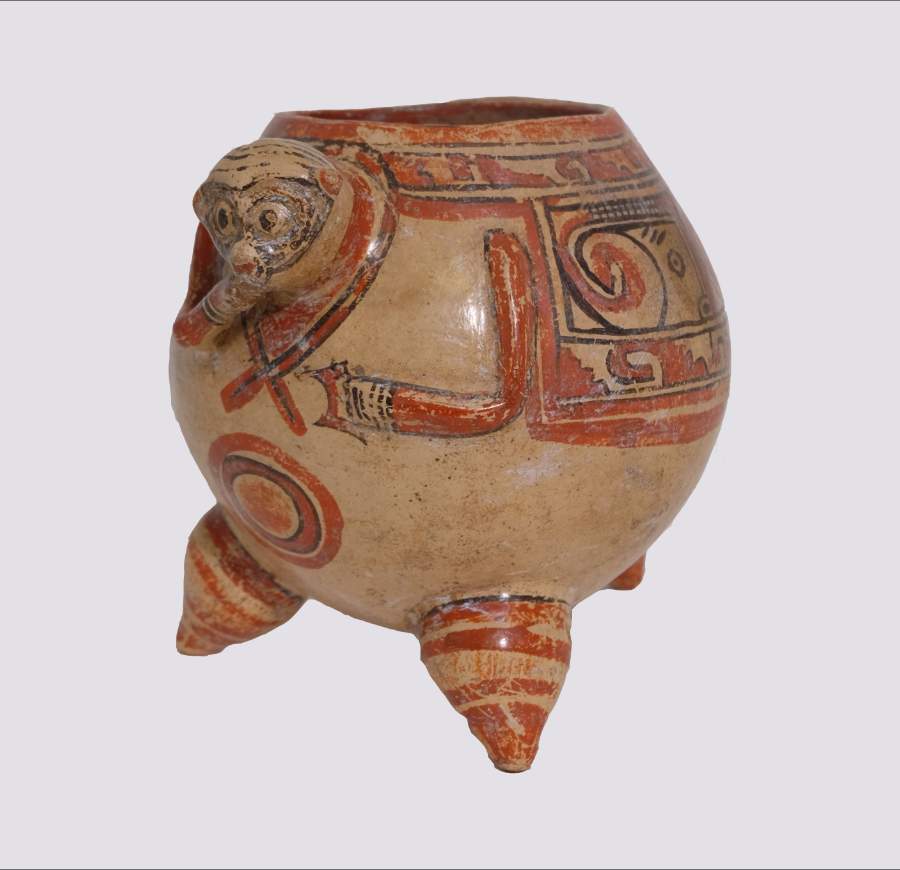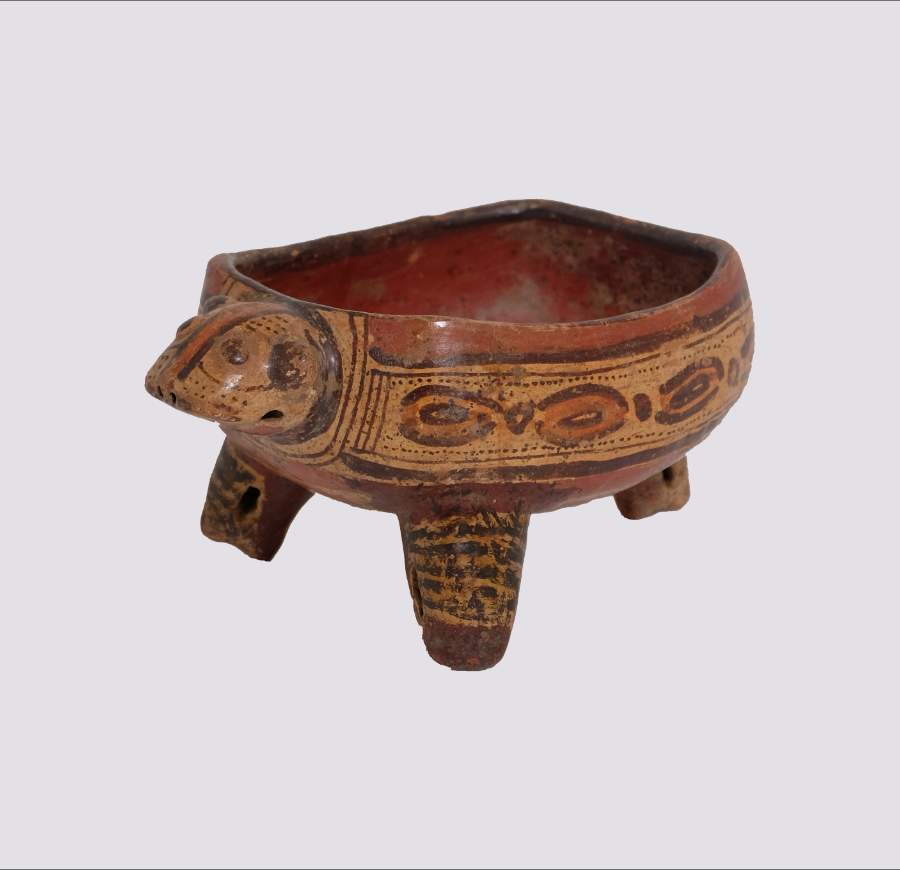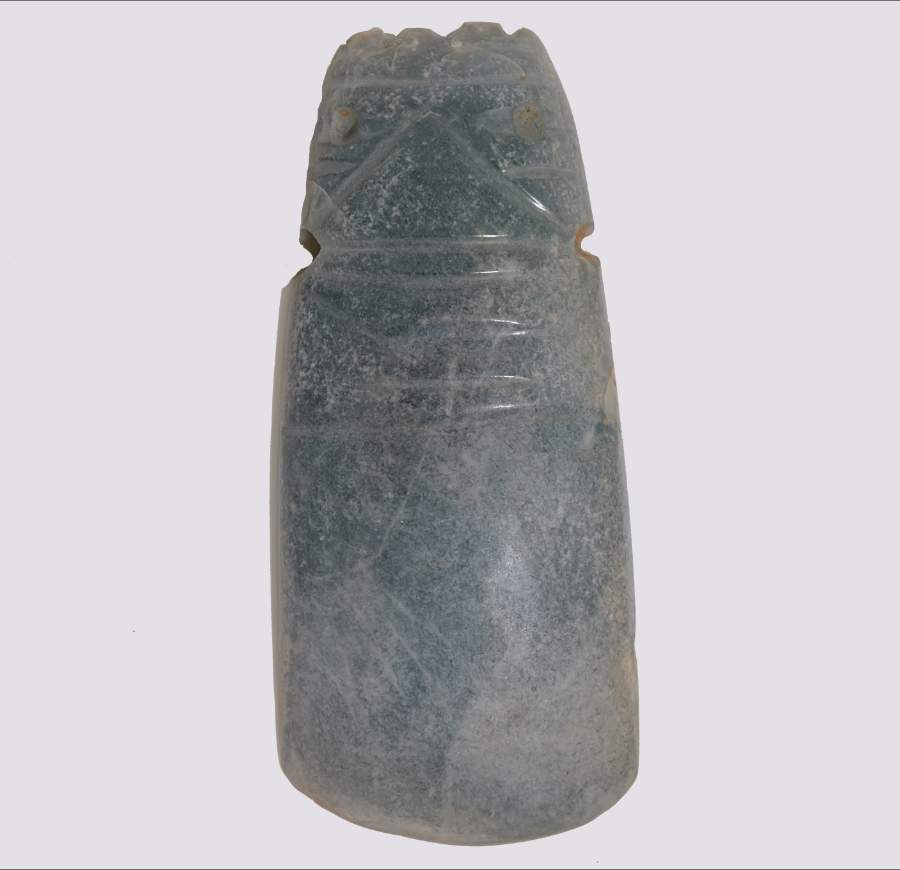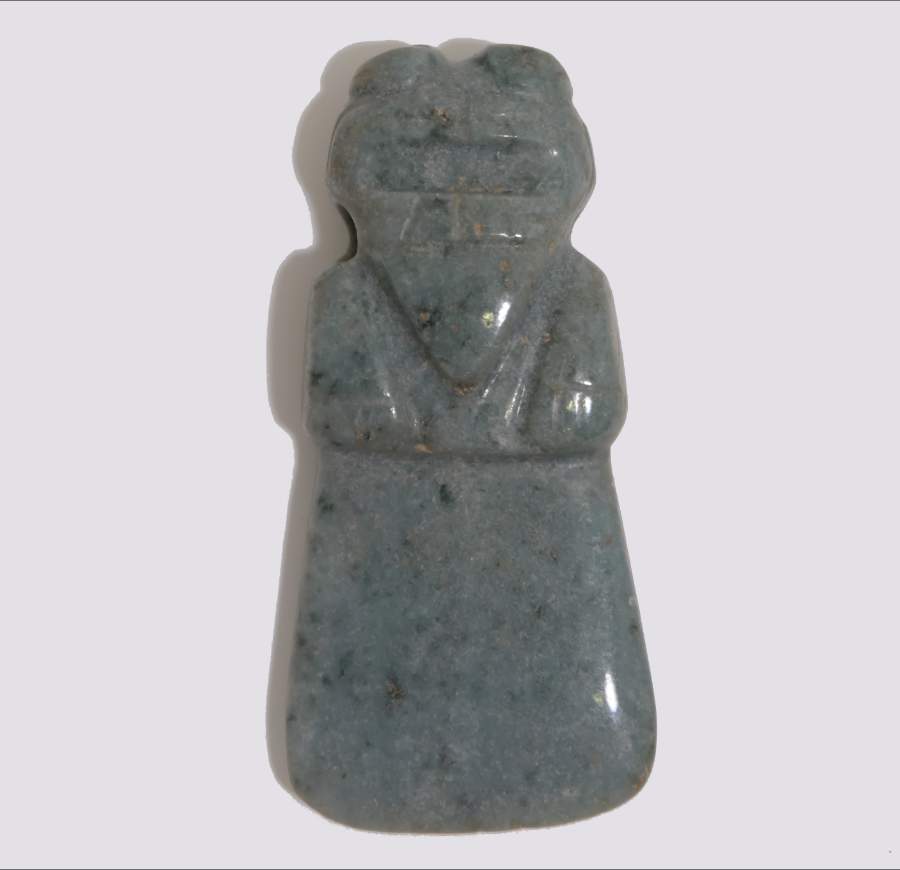Shamans and spirits
4 May - 2 July 2018
A selection of ceramics and jade pieces from the Nicoya-Guanacaste culture, in collaboration with the Museu Arqueològic de Catalunya.
The Gran Nicoya culture has its roots on the Pacific coast between Nicaragua and Costa Rica. Their belief system is closely linked to the spirit world, the relationship with the environment and the development of rituals in symbiosis with agricultural cycles. The relationship with the gods and spirits was more the responsibility of shamans than a political or priestly elite.
This culture is known for its polychrome pottery, which features a wide variety of shapes and decorations (inlaid, painted and modelled) and its use of jade, a material that was highly appreciated because of its symbolic value, associated with life and fertility.
The items from the Folch Collection on display in this case are being shown as part of a collaboration with the Archaeological Museum of Catalonia, where you can visit the exhibition “Shamans and Spirits. Treasures from the Jade Museum in Costa Rica”, from March to June 2018.
Related pieces
Other pieces that may interest you ...
Beauty and Everyday Life
2019
A close look at the loom pulleys of West Africa which reveal the vital role of beauty in everyday life.
Further informationShibui
2018
An introduction to the concept of non-western beauty, very rooted in Japanese culture and with a notable presence in ceramic objects.
Further informationFaces
2019
A reflection on the distinctness of faces and their representation in objects. What do the gazes of the images give back to us?
Further information




